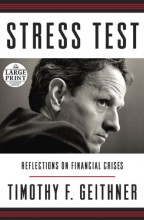In a recent post I described how I discovered the benefits of being and using a contract CFO. In my last post I dug a little deeper into why companies should consider a contract CFO. In this post I’ll more broadly discuss the pros and cons of freelancing.
I started writing this post as a separate list of pros and cons. However, I realized that pros and cons can be one and the same depending on experience, goals, and personality. Overall, being a freelance CFO has been great for my career and lifestyle. I’ll list the pros from my perspective while also acknowledging that each point could also be a con.
Career development. Freelancers can multiply their experience and contacts by taking on multiple roles at the same time. They can work with different management teams in different industries at different company stages, all at the same time.
At one point I was working in the hospitality, construction materials, furniture, venture capital, and telecommunications industries with companies at pre-revenue, growth, and maturity stages. The companies had many of the same shareholders, but each management team was separate.
Being a freelancer certainly isn’t the only way to get a variety of experience. In a large company, future executives often develop their careers by frequently rotating among different teams and departments. People also tend to change employers often to develop the breadth of their careers.
One down side of multiple roles can be lack of integration within teams. Freelancers can integrate themselves by being as responsive as full-time team members. They may not be able to complete every task immediately, but they can be responsive. I’ve had accountants or law firms take days to respond to my emails, which clearly sends the message that they are outsiders and not integral parts of the team. Freelancers can also make an effort to build strong relationships with individual team members.
Another down side to multiple roles is competing demands. If you prefer to serve one master, being a freelancer may not be for you. There have been times when all of my clients have wanted to schedule a meeting for the same time or have project deadlines close to each other. Sometimes I’m forced to prioritize, and sometimes I have to work long hours to get everything done.
I personally find variety and multiple demands on my time motivating and stimulating, but it’s not for everyone.
Increased Income. Many companies can’t pay market rate for a full-time employee to meet specialized needs, but most can pay a percentage of the market rate. Freelancers can make more than a full-time employee if they find enough clients and charge enough to take into account the costs of being independent. It is good for the company because they won’t have the commitment and fixed cost of hiring a full-time employee.
Freelancers have to remember that their revenue is not equivalent to a take-home salary. They should charge much more than a percentage of market rate based on time to cover costs like both sides of payroll tax, health insurance, travel, laptop, cell phone, and training. They also need to build in time for training, networking, and finding clients.
While a freelancer may generate higher income than a full-time employee, freelancing usually involves trading time for money. It lacks the opportunity for leverage that other businesses might provide, such as selling a physical product or developing software.
Some freelancers have overcome this somewhat by building their services into a practice resembling a traditional accounting or law firm. For example, some contract CFOs offer a full range of business outsourcing services led by the CFO role and hire staff to carry out the lower-level work.
Diversification. Many businesses decline or fail, which gives their executives little job security no matter how valuable they are. If freelancers lose one position, they still have their other clients.
This allows them to take more risk than they might be comfortable with as a full-time employee. I provided services for an undercapitalized, pre-revenue company with a high burn rate and inability to consistently pay my fee. The market potential was huge, but it would take a long time with a high risk of failure. I probably wouldn’t join this company as a full-time employee, but because I had other clients, I was willing take the risk.
Being a freelancer is great middle ground for the entrepreneurial and risk averse. It offers more upside than being a full-time employee, and it doesn’t require start-up capital or risk of loss (as long as you don’t let your clients get behind on paying you).
Autonomy. I don’t like being tied to the same office on the same nine to five schedule every day. I work hard, and I work long hours, but I like to be able to choose what hours I work and where I work from.
I usually work a fairly consistent schedule, but sometimes I keep working until late at night when I’m on a roll and then sleep in the next day. If it’s a nice day I might do something with my family in the afternoon, but I’ll start early and work late to make up for it. And even when I’m not working during regular business hours, I always make sure I’m available by phone or email so my clients don’t know the difference.
I do a lot of work at home and only go to an office when I have a reason to be there. I can be much more focused and productive without a commute and office distractions.
Of course, autonomy can be a challenge for those distracted easily. Even though the office has distractions, at least you’re there for the purpose of working. Home offers many more distractions with no accountability from team members. It takes self-discipline and self-motivation to have a flexible schedule and location.
Conclusion
In general, freelancing can benefit both the company and the freelancer, but freelancing isn't for everyone or for every situation. Hopefully these points help as you consider freelancing.
Question: What are other pros and cons of freelancing?











